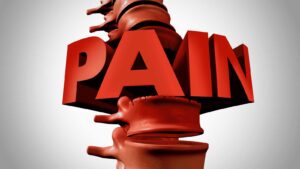
Pain and Opioid Painkillers: How Opioid Medications Affect Pain and the Body
Pain is a universal human experience, and for millions, pain and opioid painkillers have become a common issue. While these medications offer powerful relief, their

OxyContin is a brand-name prescription opioid medication containing oxycodone, a potent narcotic used to manage moderate to severe pain. It belongs to the opioid analgesic class, acting on the central nervous system to alter pain perception.
This extended-release formulation is designed to provide prolonged pain relief over 12 hours, unlike immediate-release oxycodone, which requires more frequent dosing.
OxyContin functions by binding to opioid receptors in the brain and spinal cord, reducing pain signals and producing sedative and euphoric effects. However, its potency also makes it highly addictive and a significant contributor to the opioid crisis.
Medical Uses of OxyContin
Due to its high risk for dependence, OxyContin is typically prescribed when other pain relievers, such as NSAIDs, are ineffective.
Speak Confidentially
with an opiate detox treatment expert.
While effective for pain relief, OxyContin carries significant risks, particularly when misused.
OxyContin is classified as a Schedule II controlled substance, meaning it has a high potential for abuse. Even when taken as prescribed, tolerance can develop, leading to dependence. Misuse—such as crushing, snorting, or injecting OxyContin—heightens the risk of overdose.
An OxyContin overdose can be fatal, especially when combined with alcohol or benzodiazepines.
If an overdose is suspected, immediate administration of naloxone (Narcan) and emergency medical attention are critical.
Speak With an Opioid Detox Specialist
Exceptional Care & Better Outcome. Get In Touch With Us Today!
When dependent individuals stop using OxyContin, they experience withdrawal symptoms as their body adjusts to functioning without the drug.
The severity of withdrawal depends on dosage, duration of use, and individual health factors. Many individuals find it challenging to quit without medical detoxification.
The safest way to stop using OxyContin is through a medically supervised detox, which allows healthcare professionals to manage withdrawal symptoms and prevent complications. Detox protocols often involve:
Rapid detox is an advanced method where patients undergo sedation-assisted detoxification to accelerate the withdrawal process while asleep. This procedure reduces the distress of withdrawal and is performed in an accredited hospital setting under strict medical supervision.
For patients who are not candidates for rapid detox, medically assisted detox provides symptom relief through carefully monitored medications, ensuring a safer withdrawal process.
Detox is just the first step. After detox, staying in a professional recovery retreat can aid in physical stabilization and emotional support during the crucial adjustment period.
Waismann Method is a specialized approach to opioid detox that uses medication to minimize withdrawal symptoms.
Don't hesitate to reach out for help. Recovery is possible!
OxyContin contains oxycodone, but the difference lies in the extended-release formula, allowing it to last longer than immediate-release oxycodone.
Abrupt discontinuation can lead to severe withdrawal symptoms. A medically supervised detox is recommended for a safer process.
If you experience withdrawal symptoms, cravings, or increased tolerance, it may be time to consider professional detox options.
While OxyContin is effective for pain management, its potential for addiction and dependence cannot be overlooked. Safe medical detox and professional supervision are key to overcoming dependence and achieving long-term wellness.
For those seeking the safest and most advanced opioid detoxification, options such as rapid detox under sedation or medically assisted detox in a full-service accredited hospital provide a responsible and effective path forward.
If you or a loved one is struggling with OxyContin dependence, seeking expert medical care can be the first step toward a healthier, opioid-free life.
What's New at Waismann Method®

Pain is a universal human experience, and for millions, pain and opioid painkillers have become a common issue. While these medications offer powerful relief, their

The Latest on New Opioid Prescription Laws As of 2025, states across the U.S. including Florida, Tennessee, and Michigan have enacted and updated New Opioid

Oxycodone, is a powerful prescription opioid used to manage moderate to severe pain. Whether you’re a patient, a healthcare provider, or someone facing a drug
Get Newsletter Updates from Waismann Method®
"*" indicates required fields
DISCLAIMER: The text presented on this page is not a substitute for professional medical advice. It is for your information only and may not represent your true individual medical situation. Do not hesitate to consult your healthcare provider if you have any questions or concerns. Do not use this information to diagnose or treat a health problem or disease without consulting a qualified healthcare professional. Be advised that Opiates.com articles are derived from various sources and may not reflect your own country’s regulations.